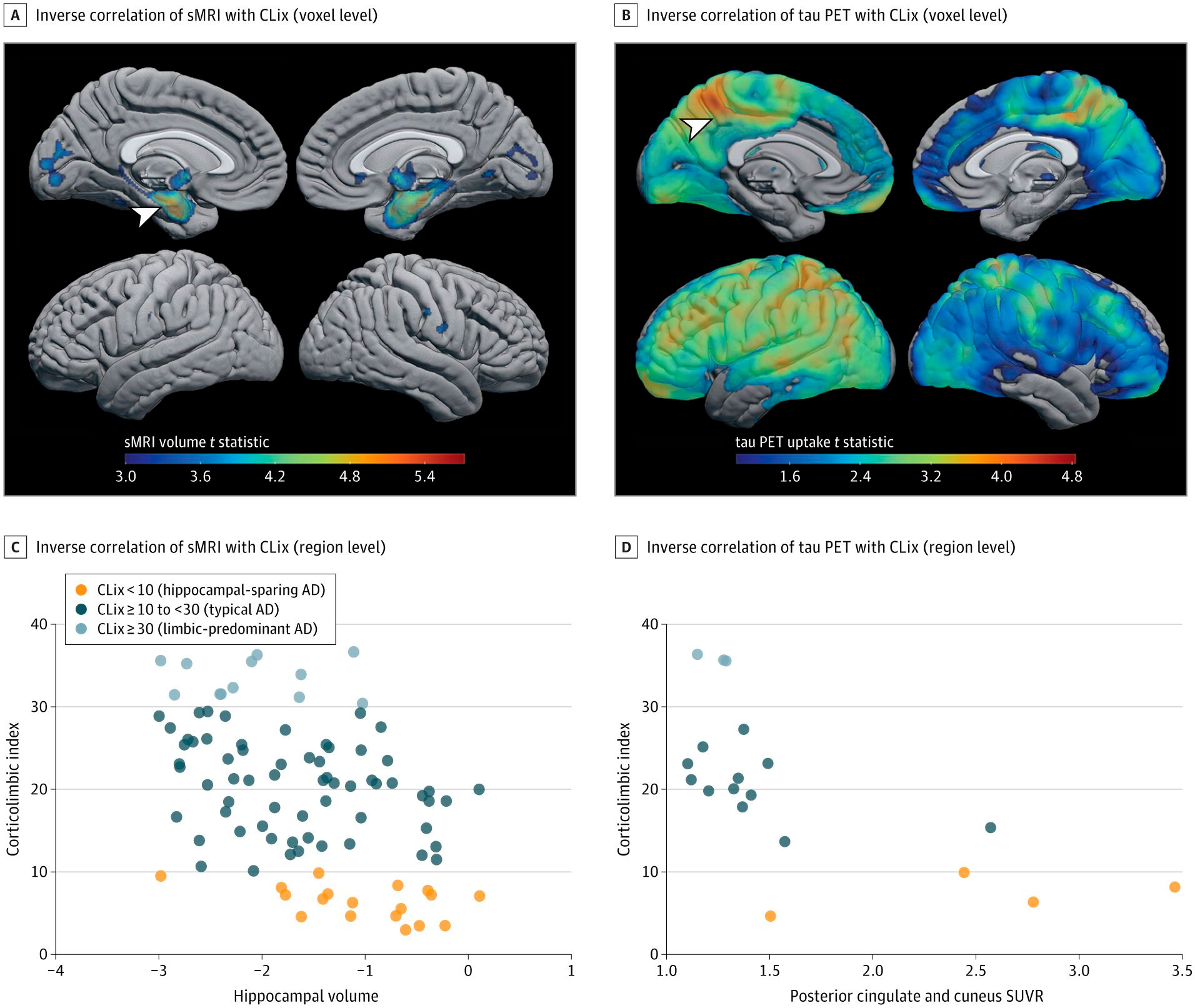
梅奥诊所的研究人员使用一种名为“皮质边缘指数”的新工具来诊断阿尔茨海默病(一种导致痴呆症的主要原因),发现了大脑中一系列具有独特临床特征和免疫细胞行为的变化。
他们的研究成果发表在《JAMA Neurology》杂志上。该工具根据大脑变化的位置将阿尔茨海默病病例分为三种亚型,并在团队先前研究的基础上,展示了这些变化对不同个体的不同影响。揭示该疾病的微观病理学机制,有助于研究人员识别可能影响未来治疗和患者护理的生物标记物。
一种名为“皮质边缘指数”的新工具,可以对毒性tau蛋白的位置进行评分,这些蛋白会损害与阿尔茨海默病相关的大脑区域内的细胞。研究发现,这些蛋白质积累的差异会影响疾病的进展。
“我们的团队发现在性别、出现症状的年龄和认知能力下降的速度方面存在显著的人口统计学和临床差异,”佛罗里达州梅奥诊所的转化神经病理学家、该研究的资深作者 Melissa E. Murray 博士说。
该团队分析了1991年至2020年间捐献的近1400名阿尔茨海默病患者的脑组织样本。这些样本是佛罗里达州阿尔茨海默病倡议多种族队列的一部分,该队列存放在梅奥诊所脑库。该队列由梅奥诊所与佛罗里达州阿尔茨海默病倡议合作创建。
样本包括亚洲人、黑人/非裔美国人、西班牙裔/拉丁裔美国人、美洲原住民和非西班牙裔白人,他们在佛罗里达州的记忆诊所接受治疗并捐献大脑用于研究。
为了验证该工具的临床实用性,研究人员进一步研究了梅奥诊所中曾接受过神经影像学检查的参与者。研究人员与梅奥诊所Prasanthi Vemuri博士领导的团队合作,发现皮质边缘指数评分与MRI检测到的海马体变化以及tau蛋白正电子发射断层扫描(tau-PET)检测到的大脑皮层变化一致。

结构磁共振成像 (sMRI) 与 PET 扫描在皮质边缘区 tau 蛋白与缠结分布之间的关联。来源:JAMA Neurology (2024)。DOI:10.1001/jamaneurol.2024.0784
“通过结合我们在神经病理学、生物统计学、神经科学、神经影像学和神经病学方面的专业知识,从各个角度研究阿尔茨海默病,我们在了解它如何影响大脑方面取得了重大进展,”Murray 博士说。
皮质边缘指数是一项评估方法,它或许有助于我们更好地理解这种复杂疾病的个体差异,并拓宽我们的认知。这项研究代表着我们迈向个性化治疗的重要一步,为未来更有效的治疗带来了希望。
研究团队的下一步是将研究结果转化为临床实践,使放射科医生和其他医疗专业人员能够使用皮质边缘指数工具。
默里博士表示,该工具可以帮助医生识别阿尔茨海默病患者的病情进展,并改善临床管理。该团队还计划进一步研究使用该工具来识别大脑中对毒性tau蛋白具有抗性的区域。

